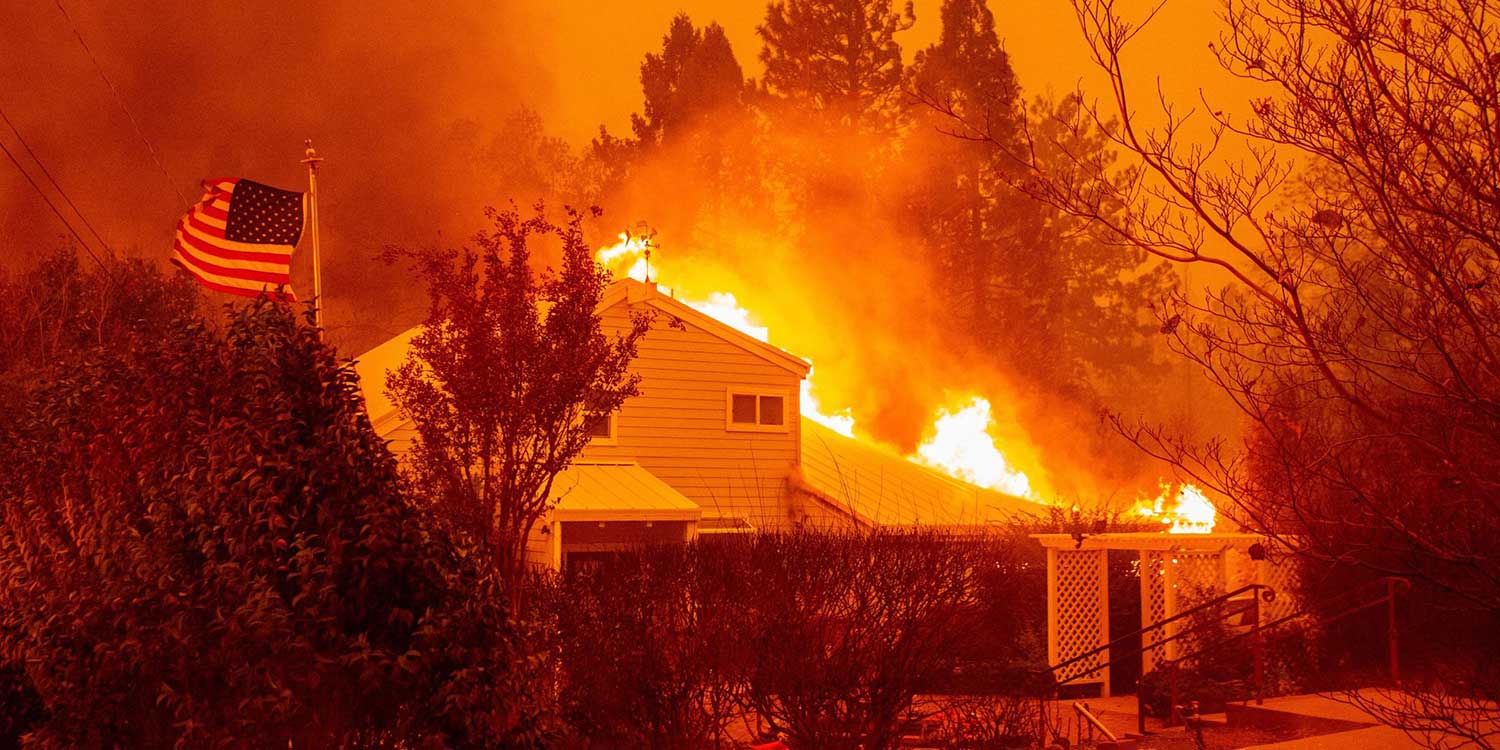How Do California Wildfires Affect the Housing Market in Northern California?
June 15, 2020
The recent onslaught of wildfires has left many communities in Northern California devastated.
The effects have been immense as fires have destroyed hundreds of thousands of acres of land, wiped out countless neighborhoods, and even leveled the entire town of Paradise. This destruction has left thousands of people without homes and faced with the burden of trying to rebuild their lives.
For many residents, recovering from this disaster has meant finding temporary housing, rebuilding their homes, or relocating to different communities. While Northern Californians take on the arduous process of recovering, they face the challenges of the aftermath in the form of mental, emotional, and economic struggles.
Below are some of the ways in which the wildfires have affected the housing market.
Home values in fire-ravaged areas will temporarily decrease and rents will increase.
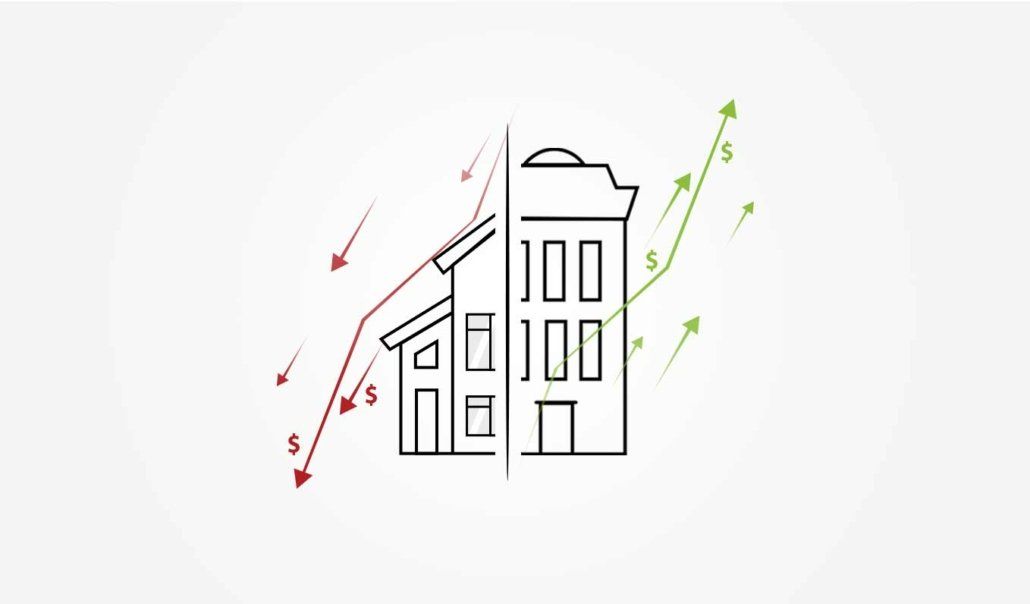
According to an article on Multi-Housing News, home values in the areas destroyed by fire will temporarily drop due to a decrease in demand.
The destruction of the landscape and views, as well as the effects on the quality of life, may cause people to be reluctant to purchase homes in these areas, and some residents may choose to avoid living in these communities because of future risk of fire.
But there is hope since home values should eventually bounce back as residents rebuild their homes. Communities affected by wildfires generally experience an immediate drop in home values followed by a return to normal levels in about two to three years after being destroyed by fire.
As families begin the process of recovering from the wildfires, many will move into rentals temporarily. Due to the high demand for rental units to house families that have been displaced, rents will greatly increase.
High insurance costs or lack of insurance will make purchasing homes difficult and drive some residents to other communities.
Insurance companies have been raising rates and declining to sell new policies or renew existing ones for homes in fire-prone areas due to wildfire risks.
In some areas, insurance is not available at all, or if it is, the premiums are excessively high, making it difficult for buyers to purchase homes.
Some buyers may compensate for higher insurance premiums by spending less money on their homes to offset the additional insurance costs.
These challenges have forced many homeowners to purchase insurance from a surplus carrier or the California FAIR Plan, which is the state’s insurer and is suggested only as a last resort because this coverage may cost three times the amount of a traditional homeowner’s policy, and policies only cover losses from fire and smoke.
According to the California Association of Realtors, if you choose to go this route, you will need to purchase Differences in Conditions (DIC) insurance to cover other issues, such as liability and theft. These insurance rate increases and the inability to find insurance are causing buyers to avoid fire-prone areas and look elsewhere for homes.
Home prices will continue to increase in neighboring communities untouched by the fires.
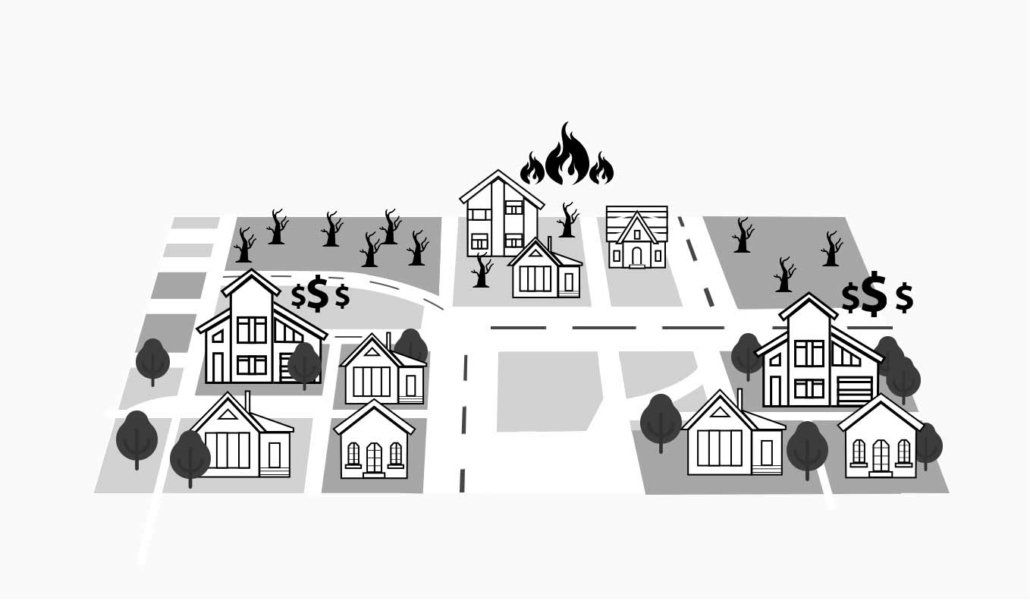
According to an article on Realtor.com, home prices and rental rates will continue to increase in areas that were untouched by the fires and are located near those communities destroyed by fire.
There is a high demand for untouched homes that are close to areas destroyed by fire as families affected by the fires find other places to live, and previously vacant rental units have been filled by those who lost their homes, leaving fewer available rental properties.
Many residents flock to these nearby areas so they can remain near their workplaces, schools, friends, and other family members rather than relocating far away from home. This causes a lack of supply in these areas, which leads to higher home prices.
The demand and value of homes will decrease in fire-prone areas, while they will increase in areas with less risk of fire.
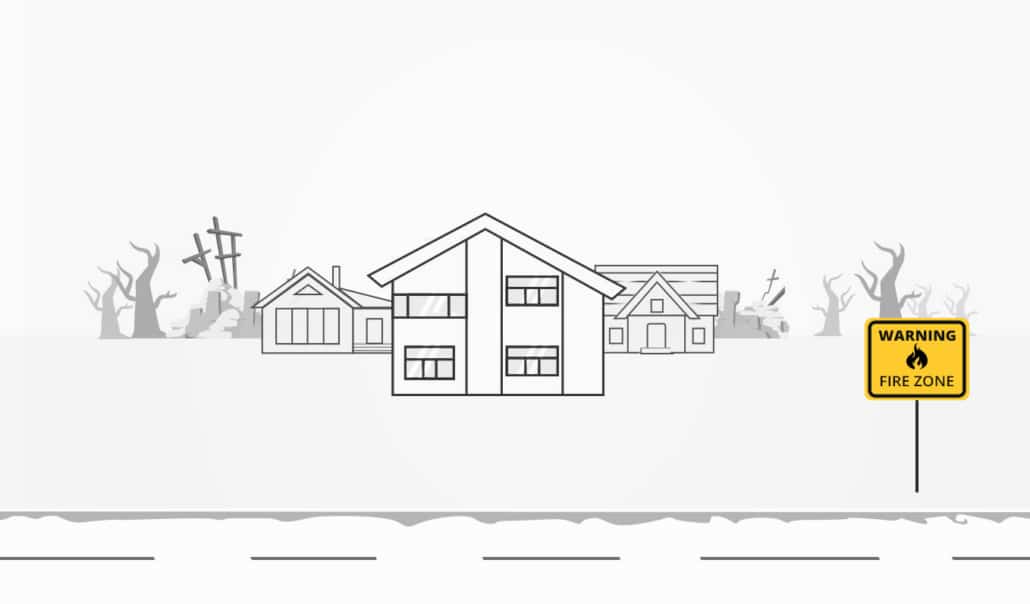
Residents are more likely to be drawn to areas with a lower risk of fire, which will lead to higher demand and higher prices for homes in these areas.
While areas untouched by the wildfires will see a rise in prices, homes that were spared from the fires, but are located in the midst of communities that were destroyed should see a decrease of 25 to 50 percent, according to Real Estate Appraiser Orell Anderson of Strategic Property Analytics in Laguna Beach.
People won’t want to purchase these homes because they sit in the middle of scorched areas and are often surrounded by debris and rubble where there used to be homes.
According to the California Association of Realtors, home sales have decreased greatly over the past year in some areas, with a decrease of 24% in Tuolumne County, 18% in Shasta County, 15% in Nevada County, and 10% in Placer County.
Power outages will cause difficulties for residents.
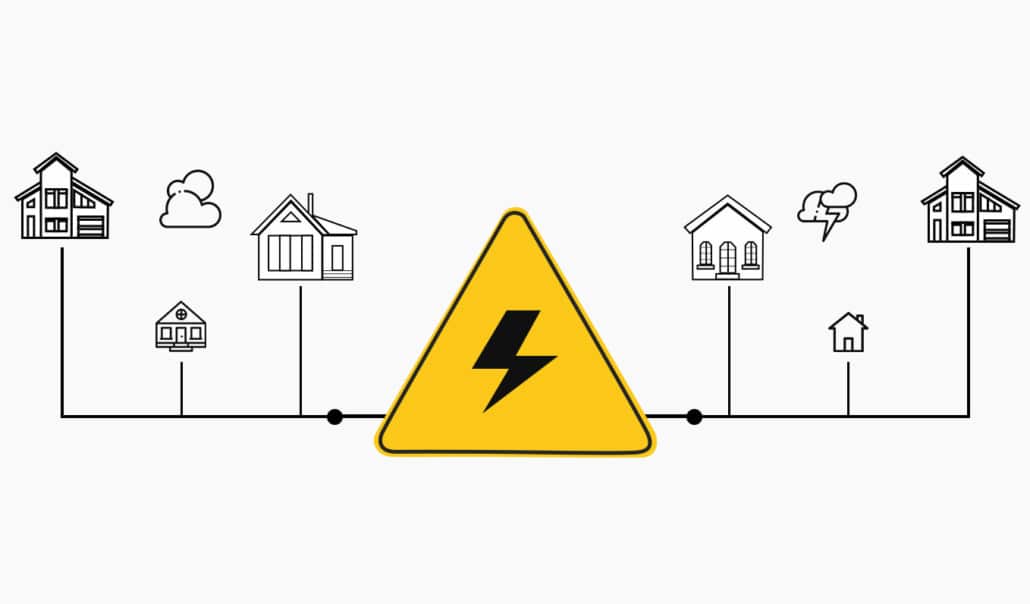
High winds may cause utility poles to fall over and potentially bring power lines down onto dry vegetation, which may start fires. As a precautionary move, PG&E began instituting power outages causing blackouts affecting more than one million residents in portions of 17 counties due to the heightened risk of fire. The majority of these homes had power restored within a couple of days, but others went several days without power.
Residents have had to adapt to these outages, with many purchasing generators, flashlights, extra batteries, and non-perishable food, but generators are expensive and not an affordable option for everyone. Many schools, universities, and businesses have also had to close to accommodate the outages.
As residents continue to recover from these wildfires, they will face serious ongoing challenges and the home prices may suffer as well as fewer people look to move into those areas affected by outages.
These fires have caused severe hardship for those who have seen their lives devastated and their neighborhoods destroyed, and many residents have lost their belongings, businesses, and homes. The ramifications from these fires will last for years, but as people work to rebuild their homes and restore their communities, the housing market will eventually return to its normal state.

As a homeowner, at some point, you may want to make changes to your home. This may range from minor updates to more major renovation projects, but some of these projects are costly and may not bring you a good return on investment (ROI). According to the Remodeling 2019 Cost vs. Value Report , some remodeling projects have a greater ROI than others. The information in this report covers a wide variety of both interior and exterior projects and is specific to the San Francisco area. While this report contains useful information, it does not include the cost of sweat equity. These cost estimates are based on using paid outside labor. It also does not include information on smaller projects that homeowners commonly do to upgrade their homes, such as cabinet refacing, laminate and vinyl floor installation, bathtub refinishing, and painting. If you are preparing your home for sale, you can use the information in this report, along with current trends in renovation projects, to help you make the best decisions to make your home more appealing to potential buyers.

Remodeling your home can be a huge undertaking and a large investment of time and money. You may not be concerned about this if you don’t plan to move for a while, but if you are planning to sell your home anytime soon, there are several things you should take into consideration. If you know who your potential buyers might be, what types of homes they are interested in purchasing, and which remodeling projects are the best and worst investments, you can be confident in your decisions about how you prepare your home for sale in Sacramento. So, how do you determine how much you should spend and which projects you should do versus which ones are less important? According to the Remodeling 2019 Cost vs. Value Report , there are certain projects that may have a higher return on investment (ROI) than others. This data is specific to remodeling projects in the Sacramento area, and we will discuss some of these projects below.

When you purchase a home with land, there are red flags that may alert you to potential problems. These issues don’t necessarily mean you shouldn’t purchase the property, and most of them may be easily resolved, but it is important to be informed about any issues that may affect your ability to enjoy your new property and use it as intended. Below are 10 potential red flags to watch out for before purchasing your new property. Easements Issues Water Rights Faulty or Inadequate Septic Systems Contaminated Well Water Boundary Disputes and Surveys Usability of the Land Restrictions on Building Additional Structures Ingress or Egress Issues Electrical Power Source on Raw Land Nonexistent or Inadequate Internet Access

The housing market in Northern California fluctuates throughout the year, with an increase in home sales in the spring and a decrease in the winter. These fluctuations are influenced by the inventory of available homes, home prices, buyer motivation and sincerity, and the beginning and end of the school year. If you are planning to buy or sell a home, you should be aware of how these seasonal changes may affect your experience. Having a solid understanding of these seasonal changes may help you sell your home quickly and for the best price or buy a home that is affordable and meets the needs of your family. Below are some ways the seasons impact the housing market.

If you’re thinking of selling your home, you have probably wondered about its marketability. Will potential buyers be impressed with your corner lot, stainless steel appliances, or three-car garage? Will they be deterred by an outdated bathroom, a 20-year-old HVAC system, or leased solar electricity equipment? As you prepare your home for sale, there are some foundational things you can do to make your home more appealing to a large percentage of potential buyers. Below are some of the most common and important factors that affect how attractive your home is to potential buyers.

